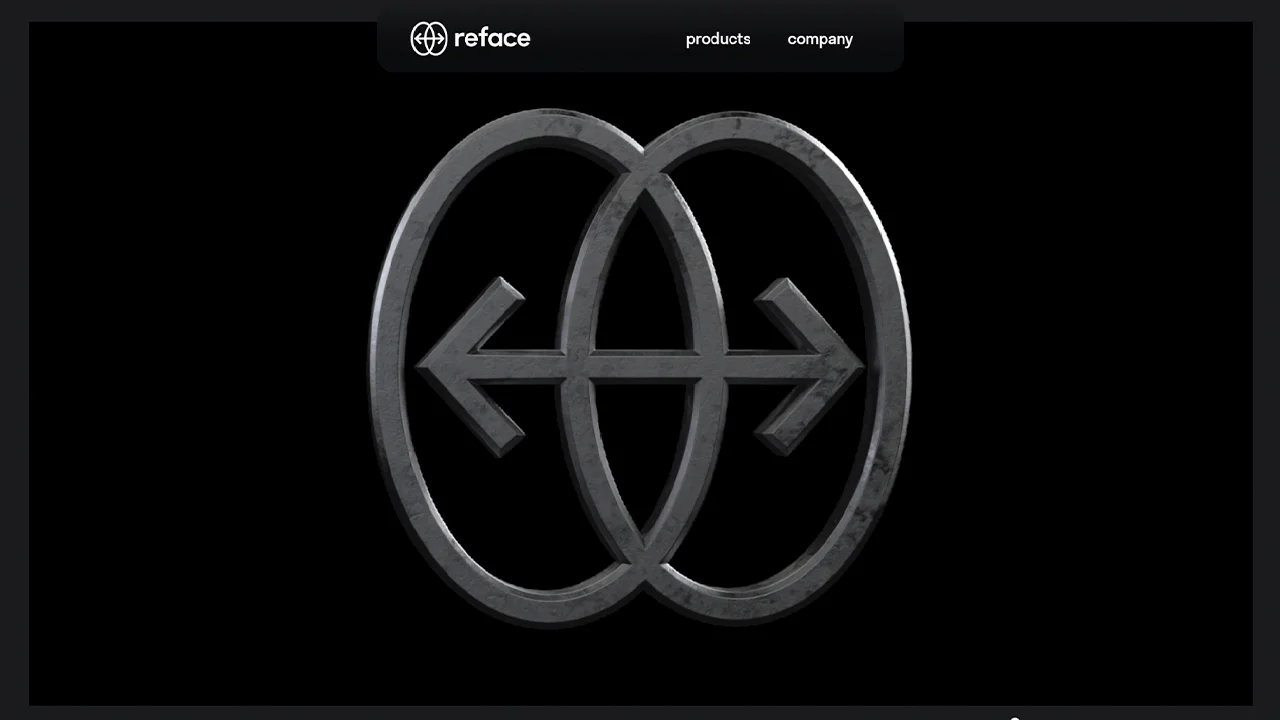With deepfake videos, you can create highly realistic fake videos on all of your devices, including your iPhone. By using deepfake apps enabled by Artificial Intelligence (AI technology), users can seamlessly swap faces in videos, making it appear as if celebrities or other individuals are saying and doing things they never said or did in real life. In this article, we’ll explore the top seven best deepfake video makers available for both Android, iOS, and Mac devices as well as cover the legal considerations for creating deepfakes.
What is Deepfaking?
Deepfaking refers to the process of creating synthetic media by replacing a person’s face (or sometimes whole body) in an existing image or video with another person’s face/body. This is achieved through the use of machine learning algorithms and deep learning techniques, such as generative adversarial networks (GANs).
As deepfake technology continues to evolve, it has become increasingly accessible through user-friendly apps designed for smartphones.
The Technology Behind Deepfakes
The technology behind deepfakes is based on generative adversarial networks (GANs), which are a type of machine learning algorithm that can create new data based on existing datasets. In the case of deepfakes, these algorithms analyze thousands of images and videos of the target individual, learning to accurately mimic their facial expressions and movements.
Once the algorithm has been trained, it can be used to generate new video content featuring the target individual, seamlessly splicing this new footage into the original video. This is what allows deepfakes to be so convincing and realistic-looking.
With that said, the technology used to create deepfakes also poses a number of ethical concerns. There is a real risk that deepfakes could be used to spread disinformation or create fake news, which could have serious consequences for individuals and society as a whole.
Ethical Considerations and Potential Misuse
There are a number of ethical considerations associated with using a deepfake maker. While the technology may be used for harmless purposes like creating a funny meme or spoof video, people can also misuse it to create fake news, political propaganda, or even revenge porn.
As a result, it’s important to use deepfake makers responsibly and to carefully consider the implications of creating a deepfake before doing so. It’s also important to be transparent about the fact that you are using a deepfake, as misrepresenting the authenticity of a video can be harmful and misleading.
Ultimately, the impact of deepfakes on society is still being evaluated. While they have the potential to be used for both good and bad, it’s clear that they are powerful tools that must be used responsibly and with caution.
Legal Considerations of Creating Deepfakes
Creating deepfakes involves significant legal considerations, primarily revolving around issues of consent, privacy, intellectual property, and potential harm. Without explicit permission from the individuals whose likenesses are used, producing deepfakes can lead to violations of privacy rights and, in some jurisdictions, could infringe on personality rights or rights to one's own image. Furthermore, using copyrighted material, such as film clips or music, without authorization can breach intellectual property laws.
Choosing the Right Deepfake Maker
Choosing the right deepfake maker is essential to creating a high-quality deepfake. There are a number of options available on the market, each with its own set of features and capabilities. So, when selecting a software tool, consider factors like usability, system requirements, and support options. Look for software that has a user-friendly interface and provides templates or clear instructions on how to use the tool effectively. You should also check whether the software is compatible with your computer and whether it requires any specific hardware or software configurations.
Seven of the Best Deepfake and Face Swap Apps
Below are the top seven deepfake video makers that you can use to create realistic face swap videos and GIFs.
DeepFaceLab
DeepFaceLab is an open-source deepfake software that works on Windows computers. One of the most powerful tools in the field, it utilizes machine learning algorithms and GPU acceleration to create high-quality fake videos. Although it may require some technical knowledge and tutorials to get started, DeepFaceLab provides an extensive range of features and customization options for those looking to create professional-grade deepfakes.
Try it here at GitHub
ReFace

ReFace is a user-friendly deepfake app available for both Android and iOS devices. It allows users to swap faces in GIFs, memes, and video clips from popular TV shows and movies. With a simple and intuitive interface, ReFace makes it easy to create high-quality deepfake videos in just a few taps.
Try it at Google Play or the Apple App Store
Zao

Founded in 2019, Zao is a fun Chinese deepfake app that enables users to create deepfake videos in a matter of minutes. By selecting a video clip from its library, you can swap a person’s face with a character from the clip. Despite some privacy concerns, Zao remains popular for its speed and accuracy in creating deepfake videos.
Wombo

Wombo is a lip-syncing deepfake app that allows users to create entertaining videos by making their chosen character sing along to popular songs. Available on both Android and iOS devices, Wombo is perfect for sharing funny videos on social media platforms like TikTok and WhatsApp.
Try it at Google Play or the Apple App Store.
FaceMagic

FaceMagic is an AI-powered face-swapping app that enables users to create deepfakes on both Android and iOS devices. With a user-friendly interface, it’s easy to swap faces in both videos and images. The app offers a free version, but upgrading to the premium version unlocks additional features, such as unlimited face swaps and watermark removal.
Jiggy

Jiggy is a unique deepfake app available for Android and iOS devices that allows users to bring their still photos to life. By using deepfake technology and AI algorithms, Jiggy can animate your selfies and old photos, making them dance to catchy tunes. It’s an excellent app for creating shareable, fun content on social media platforms like Facebook, Twitter, and Instagram.
Deep Nostalgia

Deep Nostalgia, developed by MyHeritage, is a deepfake app that allows users to animate old photos, bringing their ancestors to life. By using computer vision and deep learning techniques, this app is perfect for those who want to connect with their family history. Deep Nostalgia is available for both Android and iOS devices.
Honorable Mentions
While we already covered the top 7 best deepfake makers, here are a few more deepfake video makers for your considerations:
- Lensa AI — Known for its deepfake and face swapping capabilities, this app uses cutting-edge artificial intelligence to create highly realistic and believable deepfakes. It can be installed on both Android and iOS devices.
- Deepfakes Web — This website enables users to generate deepfakes online. This deepfake generator doesn’t require an app and can be accessed on any device with an internet connection.
- DeepFaceLab: A Windows-based software, it lets you perform actions such as face swapping, head replacement, aging a person, and altering lip movements. It can be downloaded on Windows devices.
- Deep Art — Using AI, this app transforms your photos into artistic creations. It can be downloaded on both Android and iOS devices.
- Face Swap Live — This app, available on both Android and iOS platforms, enables you to switch faces with friends or celebrities in real-time.
- FaceApp — Using AI, this app enables you to modify your appearance in real-time. It is available for download on both Android and iOS devices.
- Avatarify — This app, which uses AI to animate photos and turn them into realistic deepfake avatars, and AI videos, can be accessed on both Android and iOS devices.
Creating your Deepfake: Step-by-step Guide
With your source material prepared and your deepfake maker software selected, it’s time to start creating your deepfake. Depending on the software you are using, the process may vary slightly, but the following steps will provide a general guide to the deepfake creation process.
Importing your source material
The first step in creating your deepfake is to import your source material into your deepfake maker. Make sure that you have selected the correct video or image files and that they are correctly aligned with the target individual’s face.
Training the deepfake algorithm
Once you have imported your source material, you’ll need to train the deepfake algorithm by running it through a series of iterations. This process involves adjusting the various settings and parameters of the algorithm until the output looks as close to the original footage as possible. It’s important to be patient during this process, as training a deepfake algorithm can be time-consuming. However, the more time you spend fine-tuning the algorithm, the better your final deepfake will be.
Fine-tuning and adjusting settings
After the deepfake algorithm has been trained, you can begin to fine-tune the settings and adjust the parameters to ensure the best possible result. This might involve tweaking the settings that control lighting, color, and contrast, or adjusting the facial expressions or movements of the target individual. Experiment with different settings and keep track of what works best for your specific project. This will help you to create a deepfake that is truly unique and tailored to your needs.
Rendering and exporting your deepfake
Once you are happy with your deepfake, you can render and export the final video. Depending on the size and complexity of your project, this process could take a few minutes or several hours. Once the video has been rendered, make sure to review it carefully to ensure that it looks and sounds convincing. You should also consider sharing a disclaimer or other information that makes it clear that the video is a deepfake and not an authentic recording.
Add Voice Overs to your Deepfake Videos with SpeechifyAI Voice Generator
To make your deepfake videos even more engaging, consider adding voice overs using Speechify AI Voice Generator. Speechify’s AI-powered tool can generate realistic AI voices for your deepfake videos, allowing you to create content that is both visually and audibly convincing.
Speechify offers a wide range of AI voice options, including different languages, accents, and styles, allowing you to select the perfect voice for your fun and engaging videos. Visit Speechify AI Voice Generator and try it for free today.
FAQ
Who invented deepfake?
The term "Deepfake" was coined by a Reddit user named 'deepfakes' in 2017, who used deep learning techniques to create fake videos.
How dangerous is deepfake?
Deepfakes are potentially dangerous as they can be used to create highly convincing, false digital media, potentially leading to misinformation, identity theft, and manipulative propaganda.
Is deepfake AI?
Yes, deepfakes are a product of artificial intelligence; specifically, they use a subset of AI known as deep learning to generate their results.
Can AI detect deepfakes?
Yes, AI can be trained to detect deepfakes, although it's a complex problem due to the increasing sophistication of deepfake technology.
Is it illegal to make deepfake videos?
The legality of creating deepfake videos varies by jurisdiction, but in many places it is illegal if it's used for malicious purposes such as fraud, defamation, or non-consensual explicit content.
What is the best AI video editing software?
Speechify AI Voice Generator offers the best AI video effects so you can edit videos like a pro.
Who can make deepfake videos?
Anyone with a smartphone or computer can make deepfake videos using the best deepfake apps available on Android, iOS, and Windows devices. These user-friendly apps powered by artificial intelligence and machine learning make it easy for both beginners and experienced users to create high-quality deepfake content.
Is there any free deepfake software?
Yes, several deepfake apps and software options offer free versions or trial periods. This lets users create and experiment with deepfake videos without making a financial commitment. Some popular free deepfake apps include FakeApp, DeepFaceLab, and Deepfakes Web.
What is the alternative to DeepSwap?
An alternative to DeepSwap is Snapchat, which offers various face swap and gender swap features. Other alternatives include high-end deepfake apps like Zao, Wombo, and Reface that offer similar functionality with additional features.
What is the easiest deepfake software to use?
The easiest deepfake software to utilize depends on the user’s preferences and familiarity with the technology involved. However, some popular and user-friendly options include Reface, Wombo, and FaceMagic. These apps offer simple interfaces and are designed for users with little or no prior experience in creating deepfake videos.
What are the best deepfake video makers?
The best deepfake video makers include DeepFaceLab, ReFace, Zao, Wombo, FaceMagic, Jiggy, and Deep Nostalgia. These apps cater to a range of users, from beginners to advanced, and offer various features to create high-quality and engaging deepfake content.




